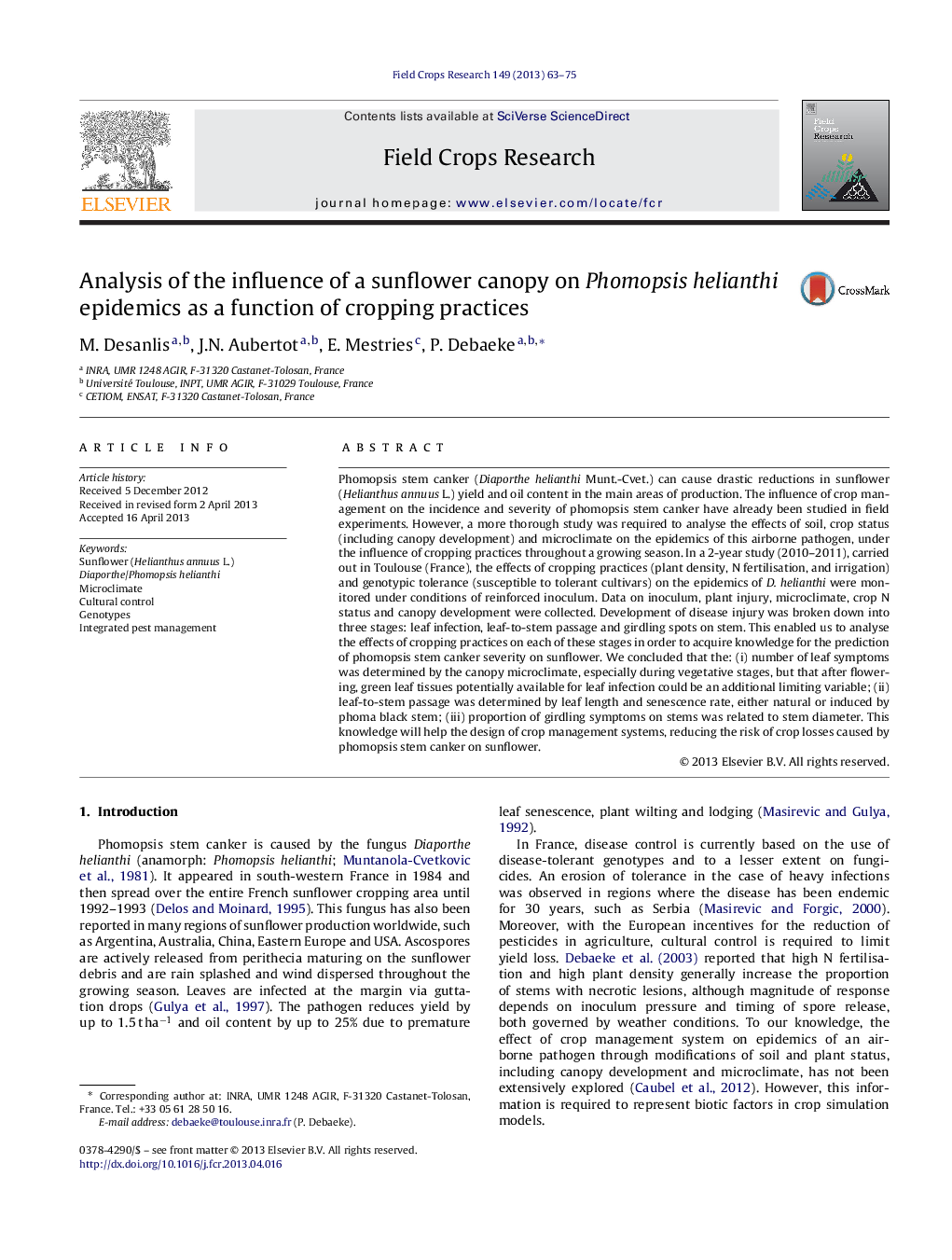| Article ID | Journal | Published Year | Pages | File Type |
|---|---|---|---|---|
| 6375237 | Field Crops Research | 2013 | 13 Pages |
â¢Weather, inoculum, genotype and crop management influence the incidence and severity of phomopsis stem canker in sunflower.â¢Final disease injury was broken down into three stages: leaf infection, leaf-to-stem passage and girdling spots on stem.â¢Leaf infection was governed by canopy microclimate and green leaf area.â¢Leaf-to-stem passage was determined by leaf length and senescence rate.â¢The proportion of girdling symptoms on stems was related to stem diameter.
Phomopsis stem canker (Diaporthe helianthi Munt.-Cvet.) can cause drastic reductions in sunflower (Helianthus annuus L.) yield and oil content in the main areas of production. The influence of crop management on the incidence and severity of phomopsis stem canker have already been studied in field experiments. However, a more thorough study was required to analyse the effects of soil, crop status (including canopy development) and microclimate on the epidemics of this airborne pathogen, under the influence of cropping practices throughout a growing season. In a 2-year study (2010-2011), carried out in Toulouse (France), the effects of cropping practices (plant density, N fertilisation, and irrigation) and genotypic tolerance (susceptible to tolerant cultivars) on the epidemics of D. helianthi were monitored under conditions of reinforced inoculum. Data on inoculum, plant injury, microclimate, crop N status and canopy development were collected. Development of disease injury was broken down into three stages: leaf infection, leaf-to-stem passage and girdling spots on stem. This enabled us to analyse the effects of cropping practices on each of these stages in order to acquire knowledge for the prediction of phomopsis stem canker severity on sunflower. We concluded that the: (i) number of leaf symptoms was determined by the canopy microclimate, especially during vegetative stages, but that after flowering, green leaf tissues potentially available for leaf infection could be an additional limiting variable; (ii) leaf-to-stem passage was determined by leaf length and senescence rate, either natural or induced by phoma black stem; (iii) proportion of girdling symptoms on stems was related to stem diameter. This knowledge will help the design of crop management systems, reducing the risk of crop losses caused by phomopsis stem canker on sunflower.
